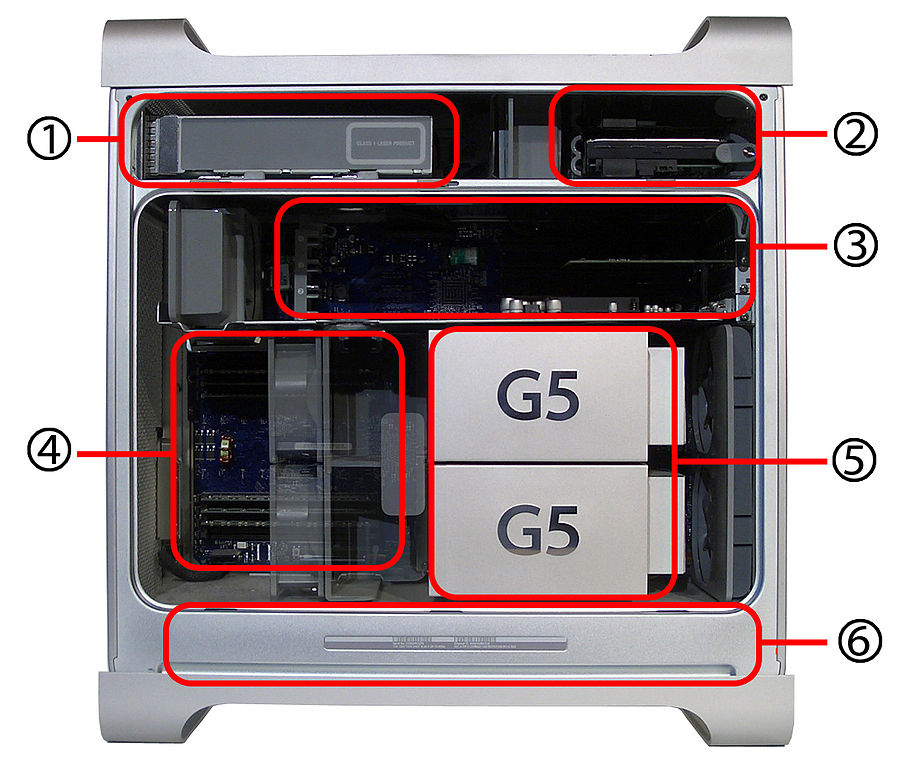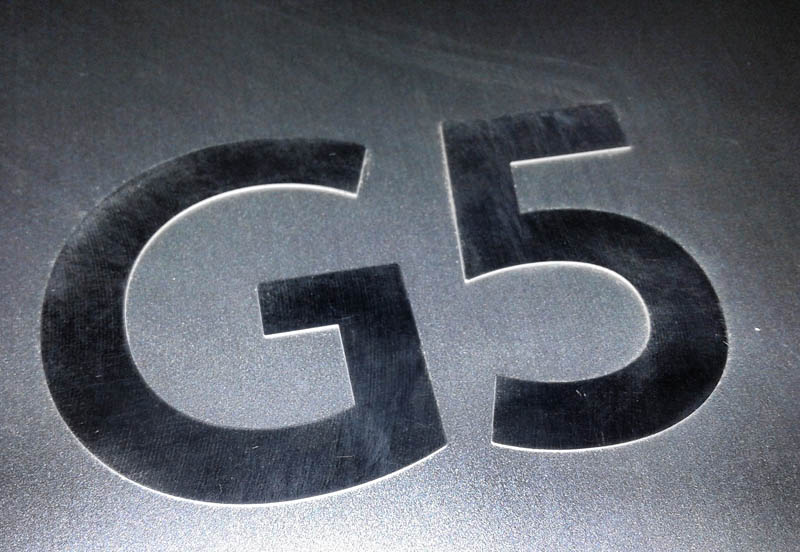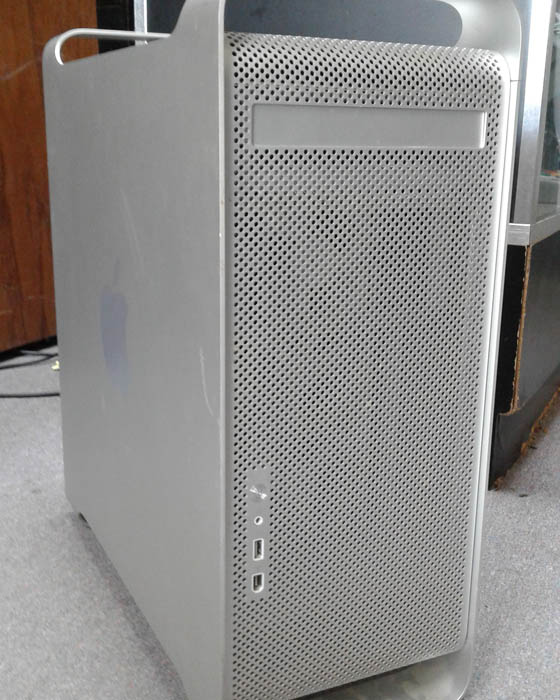At this point in our story I had a Power Mac G5, the last of the Power PC based Macintosh computers, in my possession. It worked but with a quirk in that it didn’t make the traditional “boot chime” that (until recently) all Macintosh computers had.
This bugged me enough that I set out to figure out why this was the case and solve the problem. The reason is two fold – not only is the chime part of the experience, but it is also an indicator that the machine is healthy, and if there was a problem I wanted to solve it.
Naturally I checked what online search results for “Power Mac G5 doesn’t Chime on Boot” and similar terms would get me, which would turn out to be the same few common checks again and again – some of which seemed a little extreme, but others a little more sensible.
Before we begin, let me link to an image of the G5 system:

Section 1 is the Superdrive. 2 is the Hard Drive bay. 3 is the Expansion card zone. 4 is the front air intake (which is removable) and also where the Memory is stored – note the 2 sets of 4 banks, as this is important later. 5 is the processor area, dominated by the heat sinks for the G5 processors (the above machine is an earlier 2 processor model, mine is a dual-core model, with 1 physical processor) and section 6 is the power supply, buried deep in the machine.
The machine did have quite a bit of dust in it – really incense smoke that had been sucked in through the computers life when my friend owned it – so I felt it needed a good cleaning. G5 systems have somewhere around 10 fans, depending on the model, in them, which not only means anything that gets sucked in goes everywhere but that there were that many fans to get to, take out, and clean…. and I cleaned all of them I could, save for the Power Supply fans and the ones behind the heat sink. The others, near the front of the machine were easy to remove and clean.
This didn’t change the chime issue, but at least the machine had better airflow. Next step was re-seating the graphics card, which I read was an issue, and re-seating the memory. Did both, no change.

A close up of that G5 logo because, why not?
If I recall correctly the machine came with 2.5GB of Ram – 2 256MB sticks (what the machine came with stock from Apple) and 2 1GB sticks. Something I didn’t notice was that they had all been crammed in to one side of the G5’s 2 sets of memory slots. This becomes important later…
I would follow other advice of resetting the PRAM and other variables on the machine to no effect, although this did seem to, alongside a fresh install of MacOS 10.5.8, cause the machine to behave a little better in use. Still, no boot chime.
At one stage, after taking a break from diagnosing the machine and just instead using it, I looked throught he system profiler, a tool in MacOS that tells you every detail about the machine,and noticed that in a diagnostic tab the system Memory test had failed. I began to wonder if the Memory was bad, so I took out some of the sticks. For whatever reason, when I did that and booted, the machine chimed!
Huh, must be bad memory! I thought. I tried the other sticks alone to find they too resulted in the machine booting with a chime.
Okay, so… the machine will boot properly with just those sticks.. but not with all of them?
Then, it hit me – the Power Mac G5 wants memory in “matched pairs” – 1 module in the lowest top memory slot, and the matching one in the top memory slot of the lower ram slot set – at least, that’s how this machine is designed. With 8 slots, the machine can accept 16GB max, but as mentioned above, I only had the two 256 Megabyte and two 1 Gigabyte sticks, which meant a single 256 meg and a single 1 gig stick the top and bottom sections for memory in the machine – in simple terms, anyway.
It worked. The machine chimed, and that was that. I would eventually find 2 more 1GB sticks that were compatible with the machine, bringing it to a respectable 4.5 GB of memory. I’d also change out a 320GB hard disk in the machine (which oddly only had a MacOS Leopard installer on it) for a spare 500GB drive to use as storage, with the stock 320 GB drive for my main disk. I’ll eventually change the machine to use maybe a single 1 or 2TB internal drive, or something else that will be overkill for a G5 but still be useful for what it is.
So as it stands, while it’s certainly outdated, I do have a working G5 system that’s actually pretty useful. This would only turn out to be a start to me diving headfirst into a over a decade of Macintosh computing that I paid some attention to, but never was actively involved with until recently.
Yes, I realize this isn’t really a repair, but I couldn’t think of a better title. Oh well!

This would be the G5 system in question. My power hungry beast of a machine…. for what it is, anyway.
